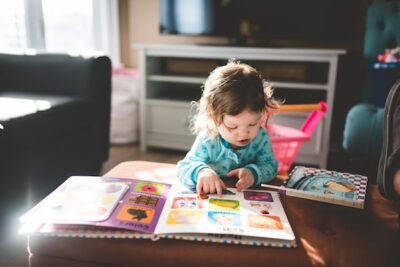 Do you have an interest in writing for children? Do you dream up story ideas that would make great books for young readers? If so, it’s important to learn about the children’s market.
Do you have an interest in writing for children? Do you dream up story ideas that would make great books for young readers? If so, it’s important to learn about the children’s market.
Every author is familiar with genre, and most can easily identify their writing as nonfiction, realistic fiction, fantasy, historical, sci-fi, etc. However, in the children’s market, it’s important to also know about book categories.
Children grow through stages of cognitive development, and at each stage, they change. Their interests, the things they find funny, the depth of their understanding, and their ability to read differ in each stage.
That’s why the children’s book market is divided into categories, and if you want to write for children, it’s important to understand these categories. Read on to get fast facts and classic examples of each.
Board Books
Board books are written to appeal to toddlers and built to withstand the tantrum of a two-year-old. Called “board” because each page is constructed of cardboard instead of paper, these books generally contain 8 pages with minimal text and large, uncomplicated illustrations.
- Word count: Fewer than 100
- Age Range: 0-4
- Classic example: Opposites, by Sandra Boynton
Picture Books
Picture books are designed for readers who can sit still for a while longer than a toddler and probably won’t tear the pages. They’re generally either 24 or 32 pages in length, have detailed illustrations that augment the narrative, follow one simple narrative arc, and are designed to be read aloud to children.
- Word count: Fewer than 1,000
- Age Range: 4-8
- Classic example: Whistle for Willie, by Ezra Jack Keats
Early Readers
Early readers appear similar to picture books, but they are intended to be read independently by emergent readers. Therefore, the vocabulary is limited and repetitive, and they are easily identified by their simple sentences and wealth of sight words.
- Word count: 1,000 – 2,500
- Age Range: 5-8
- Classic example: Danny and the Dinosaur, by Sydd Hoff
Chapter Books
Chapter books make great read-alouds, but when read independently, they also form a bridge between beginning readers and fluent readers. The chapters are brief, the plots are simple, and there are usually a few illustrations scattered throughout the text.
- Word count: 8,000 – 12,000
- Age Range: 7-10
- Classic example: Junie B. Jones, by Barbara Park
Middle Grade
Not to be confused with “middle school,” middle-grade books are designed for independent readers who are ready to take on more complex narratives with subplots and significant character development. That usually begins somewhere in third grade, but of course, every child is unique.
The content on the lower end of this category is meant to appeal to a younger set, generally ages 7-10, while books on the upper end are intended for the older set, approximately 10-13.
- Word count: 25,000 – 50,000
- Age Range: 8-12
- Classic lower middle-grade example: Charlotte’s Web, by E.B. White
- Classic upper middle-grade example: Esperanza Rising, by Pam Muñoz Ryan
Young Adult
Young adult books vary widely, but they are designed to appeal to teens. Themes range anywhere from romance to horror, and while plots are complex, there is generally some type of coming-of-age trope.
- Word count: 60,000 – 120,000
- Age Range: 13 and up
- Classic example: The Outsiders, by S.E. Hinton
As you read about the typical characteristics of each category, you probably immediately think of books that have broken through those barriers and have become wildly popular. For example, a whole lot of middle-grade readers eagerly consumed J.K. Rowling’s Harry Potter and the Goblet of Fire without being deterred by the word count. Understand that there will always be outliers, but the typical standards really do apply in most cases.
Also, please note that I have included classic examples of texts because I’m writing this post for adults who may easily access these titles in their memories. However, the market is ever-changing, and you would be wise to check out the works of contemporary creators, like:
However, the market is ever-changing, and you would be wise to check out the works of these and other popular contemporary creators:
- Picture books by Vanessa Brantley Newton and Sophie Blackall
- Middle grade fiction by Karina Yan Glaser and Meg Medina
- Young adult fiction of Jason Reynolds and Laurie Halse Anderson
Armed with knowledge about the children’s book market, you can take those ideas you have, match them with a category, and write for your target audience!
